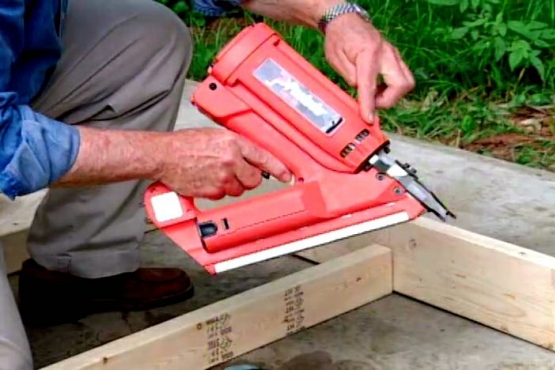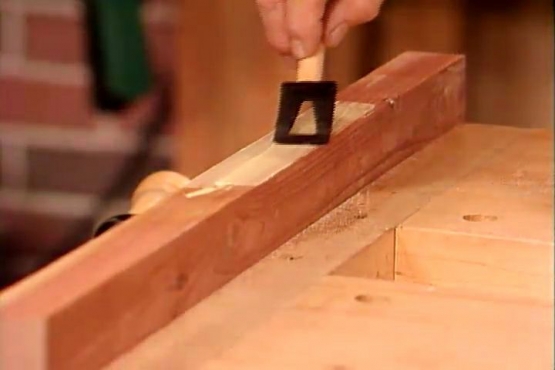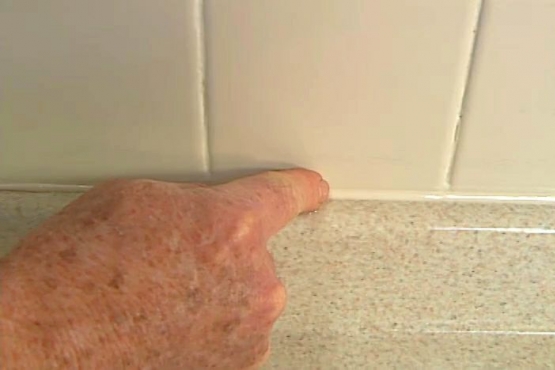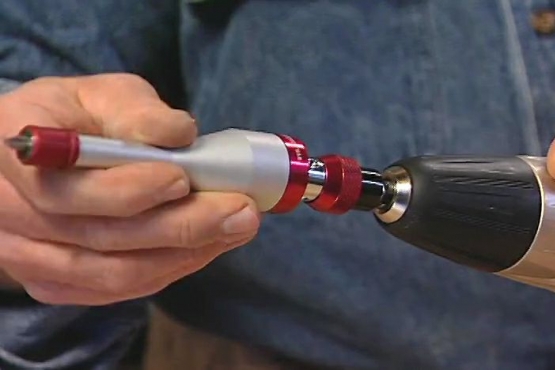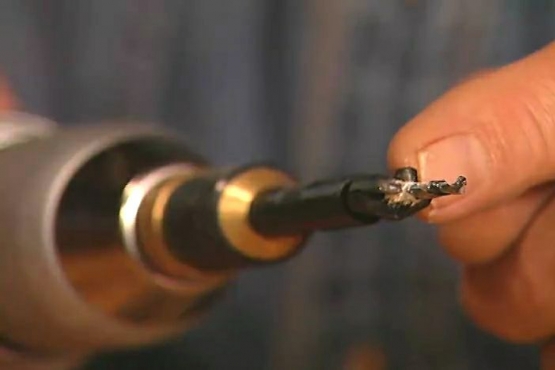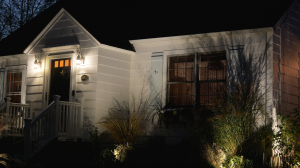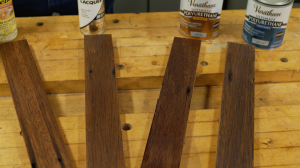How to Build up Large Crown Molding by Stacking Trim
Construct elaborate crown molding by building up layers of inexpensive trim.
Layer inexpensive stock wood trim to build up stacked crown molding that costs less than one-piece crown molding, but looks as good. How to construct an elegant crown molding profile using a compound-miter saw, construction adhesive and a nail gun.
Read More
Create the Crown Molding Profile
Mockup a short length of crown molding, layering stock baseboard and ready-made crown molding to the desired weight and profile. Test on the ceiling.

Locate and Mark Ceiling Joists and Wall Studs
Use a stud sensor to locate ceiling joists and wall studs. Mark their locations with a faint pencil line and then painter’s masking tape.

Cut the Baseboard and Molding Stock
Use a compound miter saw to cut 45 degree miters on the ends of the baseboards that will be installed on the ceiling.

Join Sections of Baseboard Using Scarf Joints
Join sections of wood trim by cutting 45 degree bevels on the ends then overlapping the miters to create a scarf joint. Nail through the scarf joint to lock together both pieces of trim.

Attach the Baseboards to Ceiling and Walls
Place the baseboard on the ceiling first, securing it with construction adhesive and nails driven into the ceiling joists. Then, attach baseboards to the wall by nailing them into the studs.

Attach Glue Blocks to Baseboard for Crown Molding Support
Apply construction adhesive to glue blocks, set them in place at each stud location and attach the blocks nails at the corners.

Make Compound Miter Cuts on the Ends of the Crown Molding
Install a crown-stop on the miter saw to hold the crown molding at the correct angle for cutting compound miters

Secure the Crown Molding
Nail twice through the crown molding into each glue block and along the top and bottom edge where it meets the baseboards.

Fill Joints and Nail Holes
Use paintable caulk to seal any gaps where the molding meets the wall. Fill nail holes with spackle. Prime and paint the molding.
Related Tips
Blog Articles
Budget-Friendly Staircase Updates You Can Do Yourself
Sometimes, the smallest details can make the biggest difference in a home. A mismatched newel post and railing can detract from the overall aesthetic of a space. Luckily, updating this feature can be a relatively simple DIY project, often requiring only a change of the newel post cap. Brian walks you through this project in the video!
Create a Safer Home with Landscape Lighting
When it comes to creating a stunning first impression and enhancing curb appeal, landscaping plays a crucial role. During the day, your landscaping, painting, and hardscaping efforts shine brightly. However, as night falls, your beautiful home may disappear into the darkness, losing its charm and potentially posing safety concerns. The solution? Landscape lighting!
How to Protect Unfinished Wood
Many people are unsure how to protect unfinished wood. Perhaps you've bought a used piece of furniture, sanded it down, and revealed its beautiful wood grain. Now, you want to preserve its natural beauty without painting it. What should you use? In this blog post, we’ll guide you through your options to help protect and showcase your wood piece.
